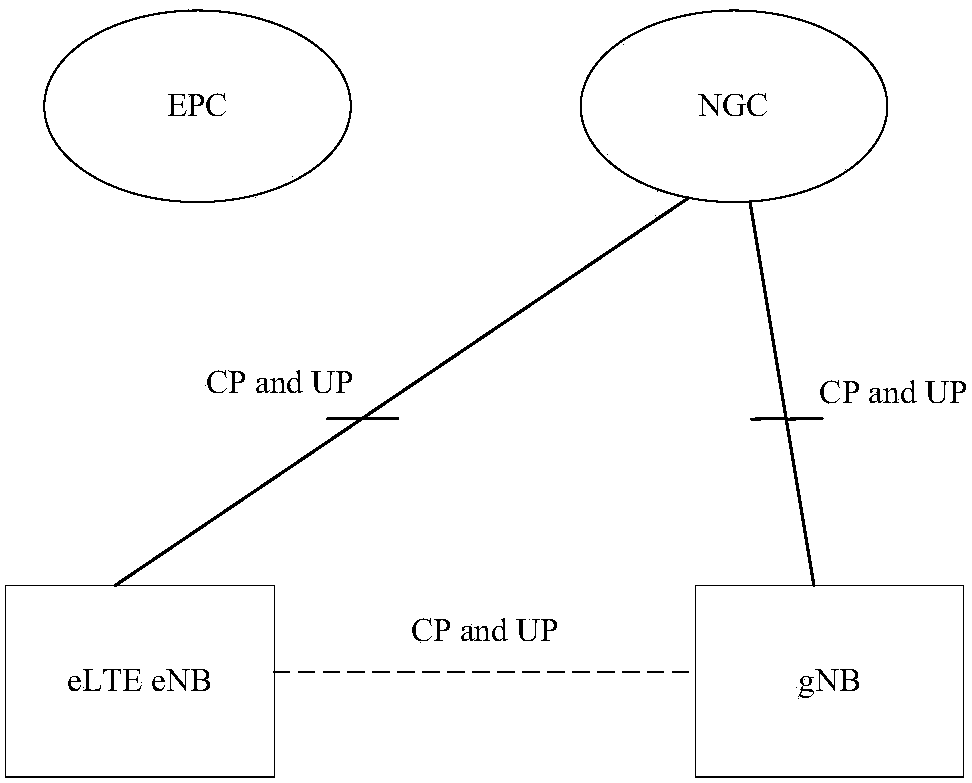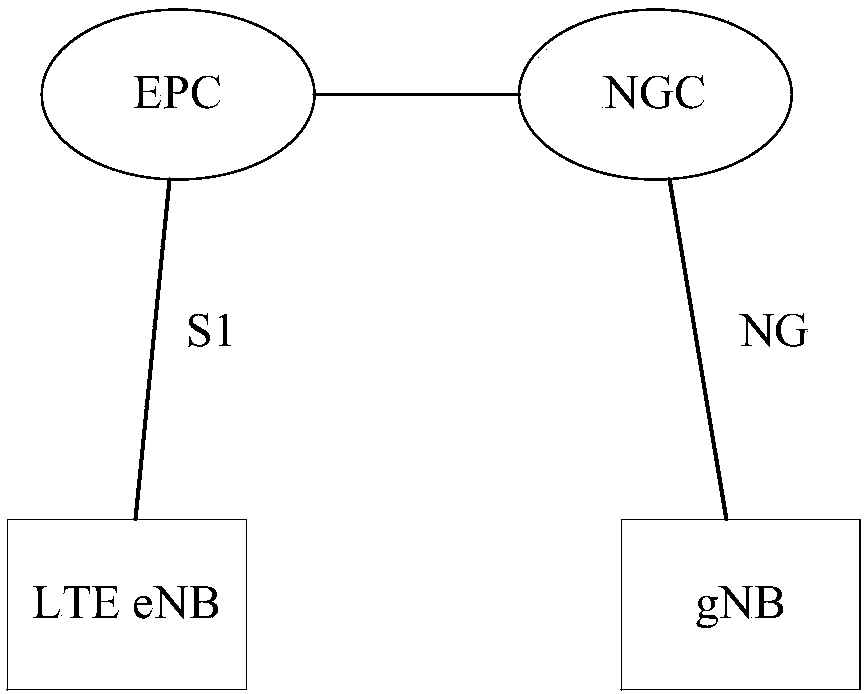Cross-RAT terminal state determination method and terminal
A technology for determining method and terminal state, applied in the field of communication
- Summary
- Abstract
- Description
- Claims
- Application Information
AI Technical Summary
Problems solved by technology
Method used
Image
Examples
Embodiment 1
[0126] Embodiment 1: After a terminal in the RRC_INACTIVE state (that is, inactive state) of the NR network enters the eLTE network from the NR network, UE AS context mapping is performed immediately.
[0127] Please refer to Figure 5 , the UE is configured in an inactive state in the NR network, and the UE AScontext corresponding to the NR network is stored. Subsequently, the UE moves from NR to eLTE. Assuming that the eLTE eNB and NRgNB belong to the same paging area, including the RAN paging area, the UE does not need to update the paging area after entering the eLTE eNB, and does not need to trigger UL transmission. The inactive state of the NR network corresponds to the eLTE system. It is assumed to be the light RRC connection of the RRC connection state (it can also be other names, such as the inactive state. In this mode, the UE and the RAN side air interface are disconnected, but the UE and the RAN side node Each stores the AS context of the UE).
[0128] Step 0: In...
Embodiment 2
[0150] Embodiment 2: After a terminal in the RRC_INACTIVE state (that is, inactive state) of the NR network enters the LTE network from the NR network, UE AS context mapping is performed immediately.
[0151] In the NR network, the UE is configured in an inactive state, and the corresponding UE AS context is stored. Subsequently, the UE moves from NR to LTE. Such as image 3 , since LTE and NR do not belong to the same core network, after UE enters LTE, it needs to perform corresponding TAU (Tracking Area Update (TAU)) update.
[0152] Step 0: In the NR network, the UE enters the inactive state, obtains the allocated UE ID in the inactive state, and stores the corresponding NR network UE AS context. The NR network UE AS context includes at least the following parts:
[0153] 1) RRC configuration before entering the inactive state;
[0154] 2) The security context before entering the inactive state;
[0155] 3) PDCP status, including ROHC status;
[0156] 4) The parameter...
Embodiment 3
[0161] Embodiment 3: After a terminal in the RRC_INACTIVE state (that is, inactive state) of the NR network enters the eLTE network from the NR network, it only performs a state change (subsequent UL does not need to be sent).
[0162] In the NR network, the UE is configured in an inactive state, and the corresponding NR network UE AS context is stored. After the UE moves from NR to eLTE, assuming that the eLTE eNB and NR gNB belong to the same paging area, including the RAN paging area, the UE does not need to update the paging area after entering the eLTE eNB, and does not need to trigger UL transmission. The NR inactive state corresponds to the eLTE system, which is assumed to be a light RRC connection in the RRC connection state.
[0163] Step 0: In the NR network, the UE enters the inactive state, obtains the allocated UE ID in the inactive state, and stores the corresponding NR network UE AS context. The NR network U E AS context includes at least the following paramete...
PUM
 Login to View More
Login to View More Abstract
Description
Claims
Application Information
 Login to View More
Login to View More - R&D
- Intellectual Property
- Life Sciences
- Materials
- Tech Scout
- Unparalleled Data Quality
- Higher Quality Content
- 60% Fewer Hallucinations
Browse by: Latest US Patents, China's latest patents, Technical Efficacy Thesaurus, Application Domain, Technology Topic, Popular Technical Reports.
© 2025 PatSnap. All rights reserved.Legal|Privacy policy|Modern Slavery Act Transparency Statement|Sitemap|About US| Contact US: help@patsnap.com



